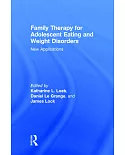Integrative, research-based, multisystemic: these words reflect not only the state of family therapy, but the nature of this comprehensive handbook as well. The contributors, all
well-recognized names who have contributed extensively to the field, accept and embrace the tensions that emerge when integrating theoretical perspectives and science in clinical settings to
document the current evolution of couples and family therapy, practice, and research. Each individual chapter contribution is organized around a central theme: that the integration of theory,
clinical wisdom, and practical and meaningful research produce the best understanding of couple and family relationships, and the best treatment options. The handbook contains five parts:
• Part I describes the history of the field and its current core theoretical constructs
• Part II analyzes the theories that form the foundation of couple and family therapy, chosen because they best represent the broad range of schools of practice in the field
• Part III provides the best examples of approaches that illustrate how clinical models can be theoretically integrative, evidence-based, and clinically responsive
• Part IV summarizes evidence and provides useful findings relevant for research and practice
• Part V looks at the application of couple and family interventions that are based on emerging clinical needs, such as divorce and working in medical settings.
Handbook of Family Therapy illuminates the threads that are common to family therapies and gives voice to the range of perspectives that are possible. Practitioners, researchers, and
students need to have this handbook on their shelves, both to help look back on our past and to usher in the next evolution in family therapy.





















